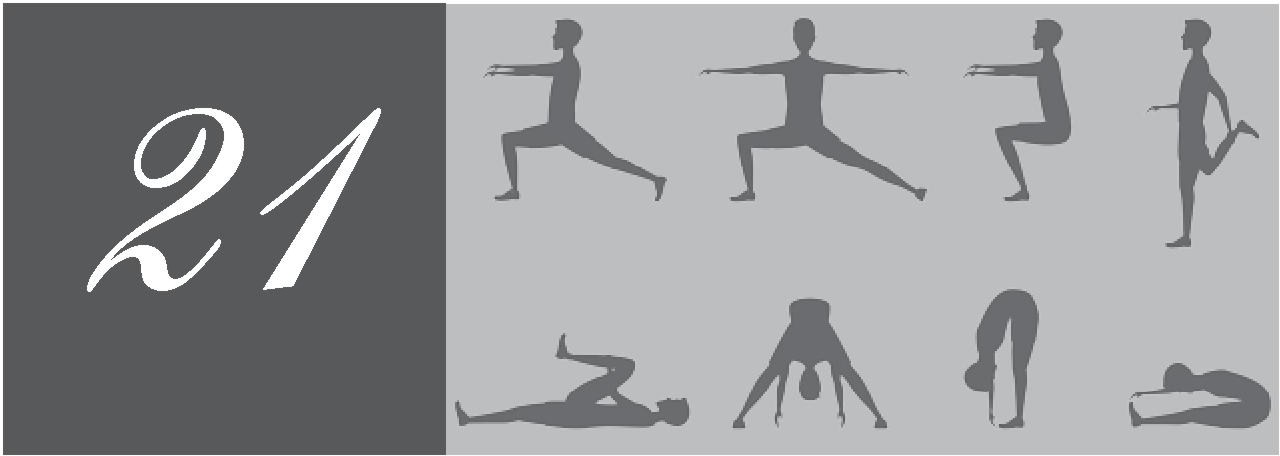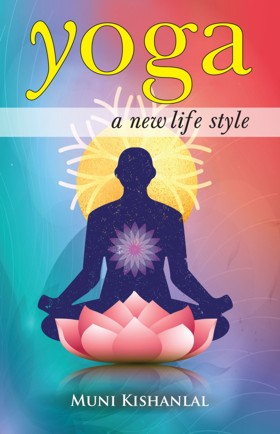
Padmasana
(Lotus Posture)
Padmasana is also supposed to be a member of Sukhasana and Swastikasana family. Padmasana is main asana among sitting asanas. Padmasana is believed to be the first step on path that leads to meditation, pranayam, contemplation and other spiritual practices. Like in other two, here too, spine is greatly influenced. The posture of legs of practitioner resemble petals of lotus flower hence the name 'Padmasana'(Padma means Lotus). Assuming Padmasana to be the base; Ardhapadmasana, Baddhpadmasana, Yogmudra, Uthithadmasana, Tulasana and Kukutasana have been formulated by Yogacharyas.
Padmasana is also known as Dhyanasana. By sitting in this asana pranayam and meditation can be practiced easily. Padmasana is believed be a great asana for chanting and other spiritual practises. When practiced over a long period of time energy centers of body are able to generate fresh energy which helps in purification of Apan vayu.

Padmasana (Lotus Posture)
Method
Sit on floor with legs stretched out in front. Now bend right leg from knee and place it on left thigh and bend left leg from knee and place it on right thigh. Place heels of both feet in such a way that navel is exactly between heels. Place hands on knees with palms facing sky. Join thumbs and index fingers keeping other three fingers straight.
Spine and neck are to be perfectly erect. While practicing this asana, hands can assume position in which right palm is on left palm with thumbs touching each other. Place hands below navel and between heels. Hands can be positioned in Gyan Mudra, too, as shown in picture.
Duration
This asana can be initially practiced from half a minute up to one minute and then gradually time span can be extended to as long as it is comfortable to be in. Inhalation and exhalation should be slow and deep.
Precaution
Person with pain or injury in knees should avoid doing this posture.
Effect on Health
This asana is a step on path to meditation and spiritual practices. It is also a very important asana keeping in view a complete but balanced development of body. Such a body is not only handsome, well built, shapely and strong but also healthy. Padmasana is more popular as a Dhayanasana among meditators. From the tantric point of view, posture of body resembles a triangle during practice of Padmasana. The legs look like base of a triangle and body from knees till head resembles sides of a triangle. In the tantra tradition, triangles have a special place. It is believed that energy rays that emerges and develops from this shape develop vital inner energy of a person. These energy rays also help this vital inner energy to travel upwards towards crown chakra.
There is also a belief that if Padmasana and Siddhasana are practiced simultaneously, then spiritual practitioner can reach ultimate meditative state. Since breathing is slow, long and balanced during practice of Padmasana, distributive capacity of lungs increases. Thighs, knees and hips experience a fresh flow of blood. Any discomfort or disorders related to spine and neck are taken care of. Unnecessary fat melts hence reducing obesity. Body remains shapely and content.
Mainly gonads and the adrenal glands are influenced with practice of this asana. The secretions of gonad are believed to be responsible for emergence of desires and cravings in a human being. Padmasana balances secretions of gonads reigning in cravings and balancing desires. Another benefit derived is the purification of blood. The pressure on adrenal gland helps control impulsiveness and rashness helping practitioner develop a positive attitude.
Other Benefits
Practice of this asana is very useful for strengthening power of concentration and celibacy. The flow of energy goes upward with practice of this asana. Thighs and waist becomes well shaped. Practitioner becomes simple and humble by nature.
 Muni Kishan Lal
Muni Kishan Lal
